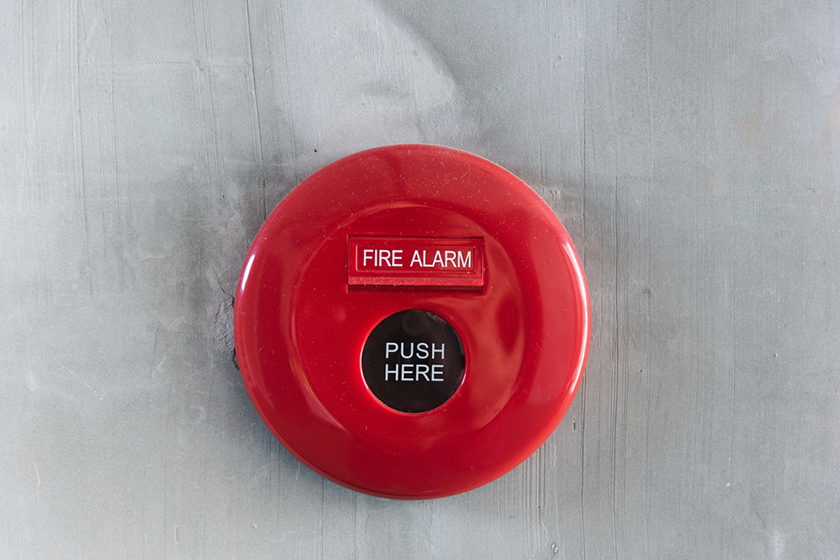9 Simple Yet Crucial Fire Safety Tips Every School Should Adopt

Making sure of fire safety in schools is a big responsibility that cannot be overlooked. The safety and well-being of students, faculty, and staff depend on proper fire safety measures being in place. Schools are busy environments with many potential fire hazards, so it’s important for administrators and facility managers to prioritize fire prevention strategies. By adopting the following fire safety tips, schools can create a safer environment that protects everyone on campus.
Regular Fire Drills and Evacuation Plans for Fire Safety in Schools
One of the most basic aspects of fire safety in schools is the use of regular fire drills. Fire drills should be done at least twice a year, so all students and staff are familiar with the evacuation procedures. These drills help identify any weaknesses in the evacuation plan and allow schools to handle them proactively.
Evacuation plans should be clearly posted in every classroom, hallway, and common area. These plans must indicate the nearest exits and outline the routes to safety. Teachers and staff should be trained to lead students to designated assembly points outside the school building.
Installing and Maintaining Fire Alarm Systems
Fire alarm systems are the first line of defense in alerting everyone on campus to the presence of a fire. Installing a reliable and modern fire alarm system is imperative for any school. These systems should include smoke detectors, heat detectors, and manual pull stations strategically located throughout the building.
Regular maintenance of fire alarm systems is needed to make sure they function correctly when needed. Schools should partner with professional fire alarm services to conduct routine inspections and tests. Any faulty components must be repaired or replaced immediately to prevent malfunctions during an emergency.
Clear Marking of Exits and Escape Routes
In the event of a fire, the ability to quickly locate and access exits can be a matter of life and death. All exits and escape routes in schools must be clearly marked with illuminated signage. These signs should be visible even in smoke-filled conditions and guide occupants to safety.
Escape routes should be kept free of obstructions at all times. Hallways, stairwells, and exits must not be blocked by furniture, equipment, or other items that could interfere with a swift evacuation. Regular inspections should be conducted to make certain that all exit paths remain clear and accessible.
Putting a Fire Prevention Program in Place
A fire prevention program is instrumental in reducing the risk of fires in schools. This program should include policies on the safe use and storage of flammable materials, electrical safety, and proper housekeeping practices. For example, all electrical appliances should be regularly inspected for signs of wear and tear, and any faulty equipment should be repaired or replaced immediately.
Schools should also enforce strict no-smoking policies on campus because smoking is a clear fire hazard. Fire prevention training for students and staff can further reinforce the need for safe behaviors and practices that minimize the risk of fire.
Regular Inspections and Maintenance
Routine inspections are necessary for identifying and reducing potential fire hazards in schools. These inspections should cover all aspects of the school building, including electrical systems, heating equipment, and fire extinguishers. Any identified hazards must be taken care of promptly to prevent the risk of fire.
Partnering with professional fire alarm services for regular system checks makes certain that fire alarm systems and other safety equipment are in optimal working condition. Schools should also make sure that fire extinguishers are strategically placed throughout the campus and are easily accessible in an emergency.
Educating Students and Staff on Fire Safety
Education is a powerful tool in promoting fire safety in schools. Both students and staff should be educated on the basics of fire safety, including how to respond in the event of a fire and how to use fire extinguishers. Schools can organize fire safety workshops, presentations, and drills to reinforce these concepts.
Teachers should work fire safety lessons into the curriculum, especially during National Fire Prevention Week. These lessons can help students understand the necessity of fire safety and encourage them to take proactive steps to prevent fires in their daily lives.
Working Together with Local Fire Departments
Establishing a strong partnership with the local fire department is critical for fire safety management in schools. Firefighters can give valuable insights into potential fire hazards and recommend improvements to the school’s fire safety plan. They can also assist with conducting fire drills and educating students and staff on fire safety practices.
Local fire departments should have up-to-date blueprints of the school building, including information on exits, fire alarm systems, and hazardous materials stored on campus. This information can be invaluable in the event of a fire, allowing firefighters to respond more effectively and efficiently.
Investing in Emergency Management & Services
Preparedness is imperative to handling any emergency, including fires. Schools should have an emergency management plan that outlines procedures for a number of scenarios, including fires. This plan should detail how to communicate with parents, emergency responders, and other stakeholders during an emergency.
Investing in emergency management and services helps to guarantee that schools are equipped to handle any situation that arises. This includes having emergency contact lists, communication systems, and medical supplies readily available.
Using Fire-Resistant Building Materials
When renovating or constructing new school buildings, using fire-resistant materials can reduce the risk of fire. Fire-resistant doors, windows, and walls can help contain a fire, preventing it from spreading rapidly throughout the building. Schools should work with architects and builders who are experienced in creating fire-safe environments.
Fire-resistant furniture and fixtures can be incorporated into classrooms and common areas. These materials bring an added layer of protection, buying valuable time for evacuation in the event of a fire.
Guarantee Fire Safety in Schools with Fire Safety Alarms
At Fire Safety Alarms, we know the importance of protecting educational facilities. Since 1979, we have been delivering top-notch fire alarm services to schools, so their fire alarm systems are always in optimal working condition. Our dedicated team of professionals is committed to delivering the best customer service, making sure every school we serve is prepared for any emergency.
Our mission is to offer unparalleled service, from initial consultations to ongoing maintenance. We are proud to have been recognized with the NYC Fire Department Special Commendation for our contributions to fire safety education. As we celebrate over 40 years in the industry, we remain focused on safeguarding schools and their occupants.
Call us at 201-963-4030 or use our online form to reach out today and learn more about how Fire Safety Alarms can help your school improve its fire safety measures.
